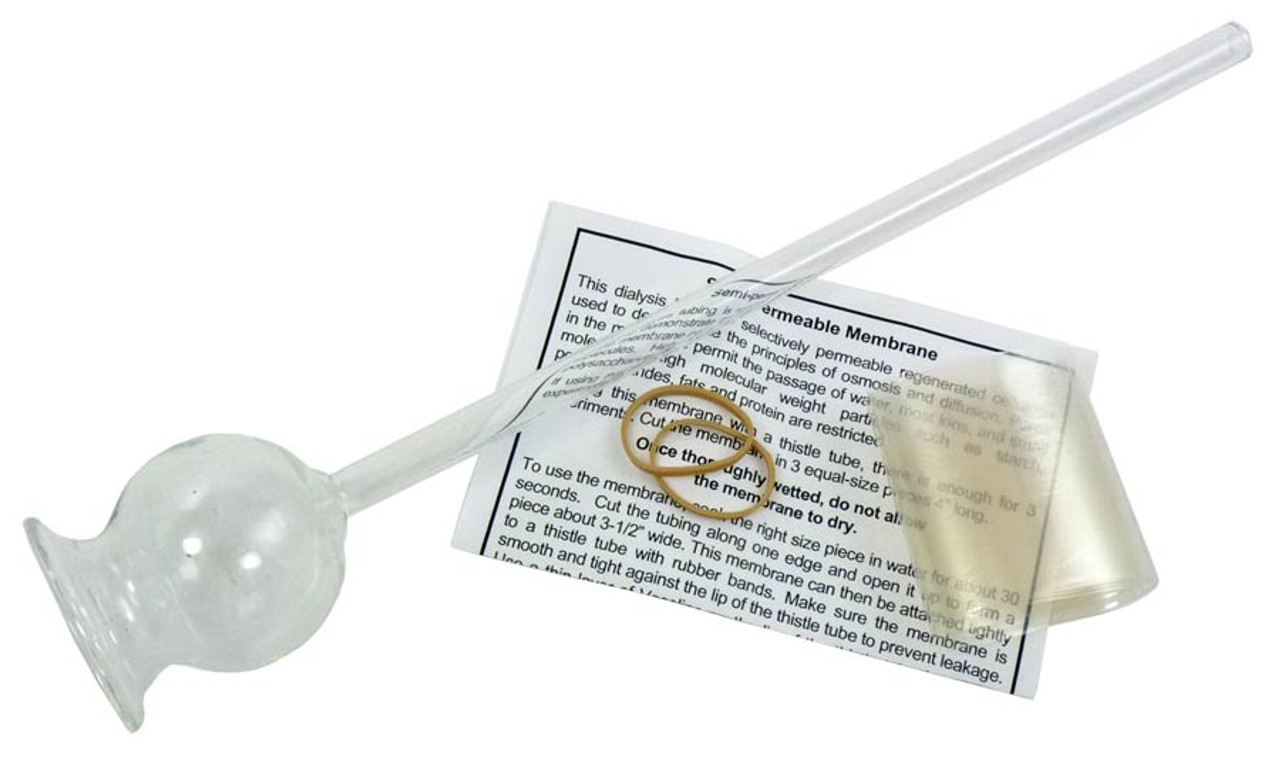
Thistle tubes, thistle feeders, distelfinks and goldfinches

A thistle tube is a piece of laboratory glassware consisting of a shaft of tube, with a reservoir and funnel-like section at the top. Thistle tubes are typically used by chemists to add liquid to an existing system or apparatus. Thistle funnels are used to add small volumes of liquids to an exact position. Thistle funnels are found with or without taps.
Since they’re meant to handle liquids, thistle tubes do not have ground glass joints. Glassware similar to thistle tubes but with female ground glass joints are called gas inlet tubes and, as their name suggests, are used to inject gases in flasks rather than liquids.
- http://www.sciencemadness.org/smwiki/index.php/Thistle_tube
The thistle tube shaft is designed to allow insertion through a small hole present in some stoppers, permitting the tube to be inserted into a container such as an Erlenmeyer flask.
- “Laboratory Glassware: Types of Laboratory Tube”. ThomasNet.
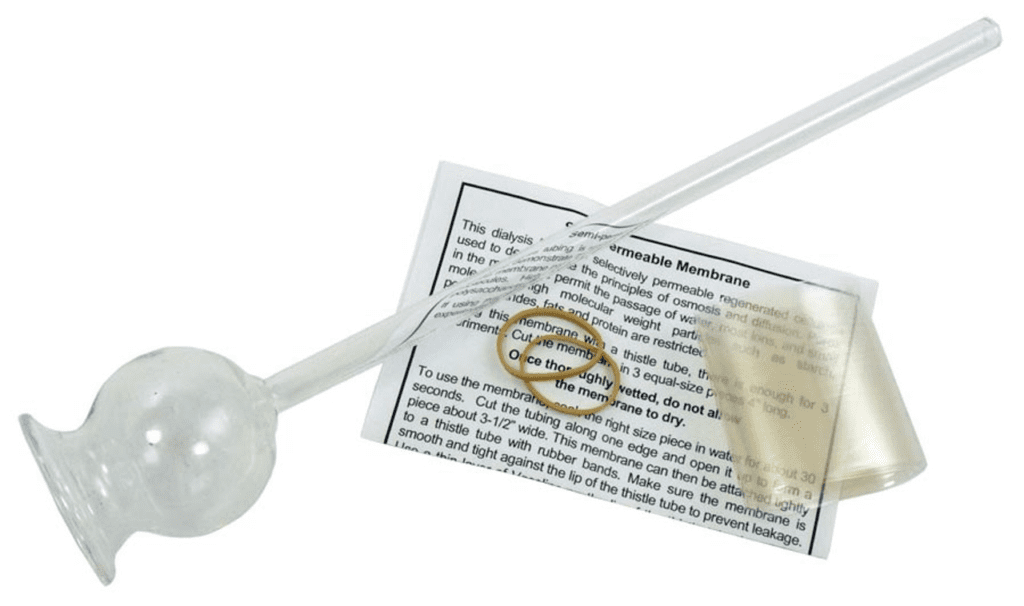
This set contains a glass thistle tube and a 12″ piece of dialysis tubing. The materials are sufficient to do up to three osmosis or diffusion experiments. Instructions are included for one omosis and one diffusion experiment.
You provide corn syrup and corn starch for the experiments.
The dialysis tubing is selectively permeable regenerated cellulose. Pores in the membrane permit passage of water, most ions, and small molecules. Particles with high molecular weight, like starch, polysaccharides, fats, and protein are restricted.
Osmotic pressure and the thistle tube experiment
Osmotic Pressure:
The actual pressure developed in a solution when it is separated from pure water by the means of a semi-permeable membrane is known as osmotic pressure. Osmotic pressure depends upon the number of solute particles present in the solution. The higher the concentration of the solution, the greater will be the osmotic pressure. It is also known as osmotic potential or solute potential. Osmotic pressure can be demonstrated by the thistle funnel experiment.
Thistle funnel experiment:
In this experiment, a thistle funnel whose mouth is covered with a semipermeable membrane, is filled with sucrose solution. It is then kept inverted in a beaker containing water. The water diffuses across the membrane due to osmosis and raises the level of the solution in the funnel. This movement of water inside the funnel can be prevented by applying pressure to the solution in the upper part of the funnel. Hence, the pressure required to prevent the movement of water completely is called osmotic pressure.
Etymology
thistle (n.) prickly herbaceous plant, Old English þistel, from Proto-Germanic *thistilaz (source also of Old Saxon thistil, Old High German distil, German Distel, Old Norse þistell, Danish tidsel), of uncertain origin; perhaps from an extended form of PIE root *steig- “to prick, stick, pierce.” Emblematic of Scotland since 15c.
Entries linking to thistle
distelfink (n.) Pennsylvania Dutch ornamental bird design, by 1939, from German Distelfink “goldfinch,” literally “thistle-finch,” from Old High German distilvinko, from distil “thistle” (see thistle) + Old High German finco “finch” (see finch). The bird so called because it feeds on thistle seeds. Compare Old French chardonel “goldfinch,” from chardon “thistle.”
- Harper, Douglas. “Etymology of thistle.” Online Etymology Dictionary, https://www.etymonline.com/word/thistle. Accessed 21 April, 2023.
Thistle bird feeder
Also called a finch feeder, thistle feeders vary in construction. Thistle feeders can be a clear plastic tube feeder with very small dispensing holes. Thistle feeders can be metal bird feeders with a small mesh screen. And they can be fabric thistle socks. A thistle sock is a type of thistle feeder made with an open weave fabric mesh that resembles a sock. In each case, a seed is pulled out of the feeder by the bird, it is not supposed to fall out on its own.
https://www.whatbirdsareinmybackyard.com/2019/08/what-is-thistle-sock-what-is-thistle-feeder.html
Distelfinks
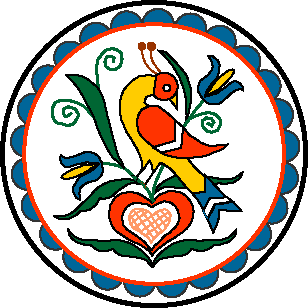
A distelfink is a stylized goldfinch, probably based on the European variety. It frequently appears in Pennsylvania Dutch folk art. It represents happiness and good fortune and the Pennsylvania German people, and is a common theme in hex signs and in fraktur. The word distelfink (literally ‘thistle-finch’) is (besides Stieglitz) the German name for the European goldfinch.
- Chotner, Deborah (1992). American native paintings. US: Oxford University Press. p. 491. ISBN 978-0-521-44301-2. Retrieved 2009-11-29.
- Distelfink definition
- Jordan, Mildred (1978). The distelfink country of the Pennsylvania Dutch. Crown Publishers. ISBN 0-517-53260-3.
In popular culture
In the story “The Sign of the Triple Distelfink“, the American cartoonist Don Rosa used a triple distelfink hex sign as the origin for Gladstone Gander‘s remarkable luck.
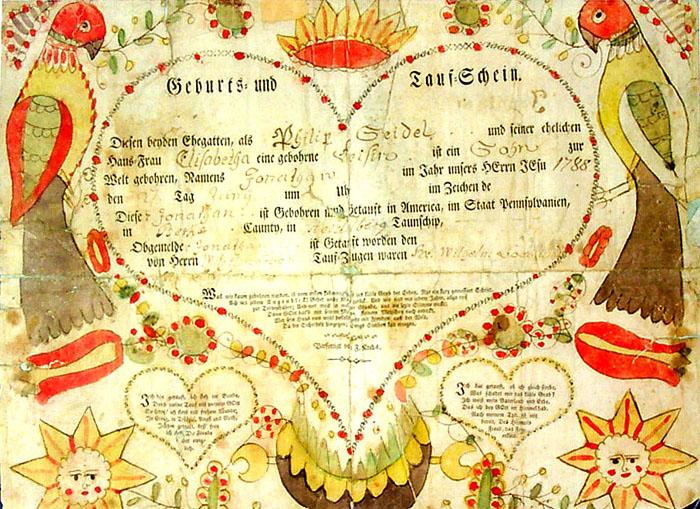
Goldfinch notes
The goldfinch is often depicted in Italian Renaissance paintings of the Madonna and Child.
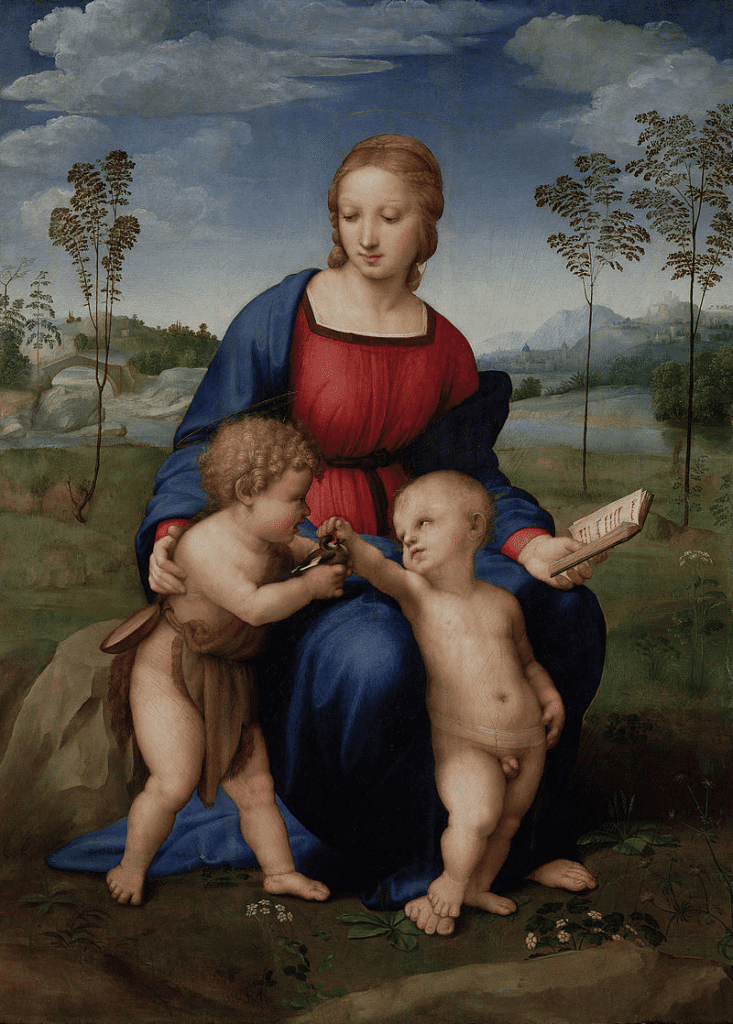
Christian symbolism
Because of the thistle seeds it eats, in Christian symbolism the European goldfinch is associated with Christ‘s Passion and his crown of thorns. The European goldfinch, appearing in pictures of the Madonna and Christ child, represents the foreknowledge Jesus and Mary had of the Crucifixion. Examples include the Madonna del cardellino or Madonna of the Goldfinch, painted by the Italian Renaissance artist Raphael in about 1505–6, in which John the Baptist offers a European goldfinch to Christ in a warning of his future. In Barocci‘s Holy Family, a European goldfinch is held in the hand of John the Baptist, who holds it high out of reach of an interested cat. In Cima da Conegliano‘s Madonna and Child, a European goldfinch flutters in the hand of the Christ child. It is also an emblem of endurance, fruitfulness, and persistence. Because it symbolizes the Passion, the European goldfinch is considered a “saviour” bird and may be pictured with the common housefly (which represents sin and disease). The European goldfinch is also associated with Saint Jerome and appears in some depictions of him.
- Werness, Hope B. (2007). Animal Symbolism in World Art. Continuum. ISBN 978-0-8264-1913-2.
Depictions in art
Antonio Vivaldi composed a Concerto in D major for Flute “Il Gardellino” (RV 428, Op. 10 No. 3), where the singing of the European goldfinch is imitated by a flute. An anonymous Italian Neapolitan poem titled Il Cardellino was put to music by Saverio Mercadante and sung by Jose Carreras. Carduelis carduelis is the European goldfinch or simply the goldfinch.
European goldfinches, with their “wanton freak” and “yellow flutterings”, are among the many natural “luxuries” that delight the speaker of John Keats‘ poem ‘I stood tip-toe upon a little hill…’ (1816).
- “2. I Stood tip-toe upon a little hill. Keats, John. 1884. The Poetical Works of John Keats”. Bartleby.com. Retrieved 2012-12-27.
In the poem The Great Hunger by Patrick Kavanagh, the European goldfinch is one of the rare glimpses of beauty in the life of an elderly Irish farmer:
The goldfinches on the railway paling were worth looking at
A man might imagine then
Himself in Brazil and these birds the birds of paradise
Donna Tartt‘s novel The Goldfinch won the 2014 Pulitzer Prize for Fiction. A turning point in the plot occurs when the narrator, Theo, sees his mother’s favourite painting, Carel Fabritius‘s The Goldfinch, in the Metropolitan Museum of Art.
- Flood, Alison (13 February 2013). “Donna Tartt to publish first novel for 11 years”. The Guardian. Retrieved 10 October 2013. Further accessed 29 December 2017
- The Pulitzer Prizes. “The Goldfinch, by Donna Tartt (Little, Brown)”. www.pulitzer.org. Retrieved 2023-02-06.
Mythology
In Greek mythology, Acanthis (‘thornette’) or Acanthyllis was the daughter of Hippodamia and Autonous and sister to Anthus, Erodius, Schoeneus and Acanthus. When their father’s horses attacked Anthus out of hunger and ate him, Zeus and Apollo, out of pity for the grieving family, transformed them into birds. Acanthis thus became a thistle finch.In Greek mythology, the name Anthus (Ancient Greek: Ἄνθος, Anthos means ‘flower, bloom or blossom’) may refer to:
- Anthus, a son of Autonous and Hippodamia. His brothers were Erodius, Schoeneus and Acanthus, and his sister was Acanthis. Once he drove his father’s horses away from the grassy meadows, where they had been pastured by his brother Erodius. Out of hunger, the horses attacked Anthus and devoured him; his father was in shock and could not help, while his mother tried to save him but failed because of her physical weakness. Zeus and Apollo, out of pity for the grieving family, transformed the members into birds. Anthus himself was metamorphosed into a bird called “anthus” which imitated the neighing of a horse, but always fled from the sight of a horse. His servant, who failed to protect the master, was transformed into a white heron. The bird genus Anthus is thus named after him.
- Anthus of Anthedon, who went missing when he was a child. His sister Hypera set out to search for him and eventually was received as guest by Acastus of Pherae, in whose household Anthus had ended up serving as a cup-bearer. As Anthus came up to his sister to serve her wine, he recognized her and whispered a rhyme to her: “Drink wine with lees, ’cause you dwell not in Anthedon“. The same poetic line was otherwise said to be part of an oracular prophecy. Certain companions of Anthus and Hypera were said to have settled in the island Calauria (previously known as Eirene, after Eirene) and to have called it Anthedonia and Hypereia.
- Antoninus Liberalis, 7 as cited in Boeus‘ Ornithogonia
- Plutarch, Quaestiones Graecae 19 referring to Aristotle and Mnasigeiton
References
- “Laboratory Glassware: Types of Laboratory Tube”. ThomasNet.
- https://byjus.com/question-answer/what-is-osmotic-pressure-name-the-experiment-which-can-demonstrate-it/
- Solved Thistle Tube Demo in Theory A thistle tube containing | Chegg.com
- Harper, Douglas. “Etymology of thistle.” Online Etymology Dictionary, https://www.etymonline.com/word/thistle. Accessed 21 April, 2023.
- Chotner, Deborah (1992). American native paintings. US: Oxford University Press. p. 491. ISBN 978-0-521-44301-2. Retrieved 2009-11-29.
- Distelfink definition
- Jordan, Mildred (1978). The distelfink country of the Pennsylvania Dutch. Crown Publishers. ISBN 0-517-53260-3.
- https://www.whatbirdsareinmybackyard.com/2019/08/what-is-thistle-sock-what-is-thistle-feeder.html
- Werness, Hope B. (2007). Animal Symbolism in World Art. Continuum. ISBN 978-0-8264-1913-2.
- “Il Cardellino”.
- “2. I Stood tip-toe upon a little hill. Keats, John. 1884. The Poetical Works of John Keats”. Bartleby.com. Retrieved 2012-12-27.
- Flood, Alison (13 February 2013). “Donna Tartt to publish first novel for 11 years”. The Guardian. Retrieved 10 October 2013. Further accessed 29 December 2017
- The Pulitzer Prizes. “The Goldfinch, by Donna Tartt (Little, Brown)”. www.pulitzer.org. Retrieved 2023-02-06.
- Antoninus Liberalis, 7 as cited in Boeus‘ Ornithogonia
- Plutarch, Quaestiones Graecae 19 referring to Aristotle and Mnasigeiton
Sources
- Cramp, Stanley; Perrins, C.M., eds. (1994). Handbook of birds of Europe the Middle East and North Africa: Birds of the Western Palearctic, Volume 8: Crows to Finches. Oxford: Oxford University Press. ISBN 0-19-854679-3.
- Newton, Ian (1972). Finches. The New Naturalist, Volume 55. London: Collins. ISBN 0-00-213065-3.
- Antoninus Liberalis, The Metamorphoses of Antoninus Liberalis translated by Francis Celoria (Routledge 1992). Online version at the Topos Text Project.
- Lucius Mestrius Plutarchus, Moralia with an English Translation by Frank Cole Babbitt. Cambridge, MA. Harvard University Press. London. William Heinemann Ltd. 1936. Online version at the Perseus Digital Library. Greek text available from the same website.
- Pliny the Elder, The Natural History. John Bostock, M.D., F.R.S. H.T. Riley, Esq., B.A. London. Taylor and Francis, Red Lion Court, Fleet Street. 1855. Online version at the Perseus Digital Library.
- Pliny the Elder, Naturalis Historia. Karl Friedrich Theodor Mayhoff. Lipsiae. Teubner. 1906. Latin text available at the Perseus Digital Library.
Further reading
- Friedmann, Herbert (1946). The Symbolic Goldfinch: Its History and Significance in European Devotional Art. Washington DC: Pantheon Books. OCLC 154129908.
- Smith, William, ed. (1870). “Anthus”. Dictionary of Greek and Roman Biography and Mythology.



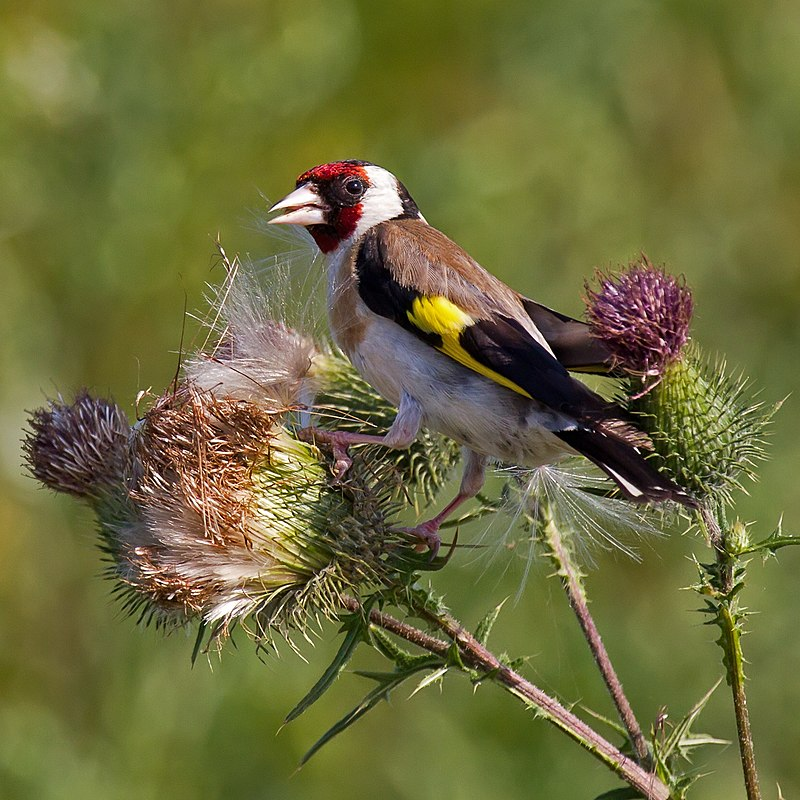
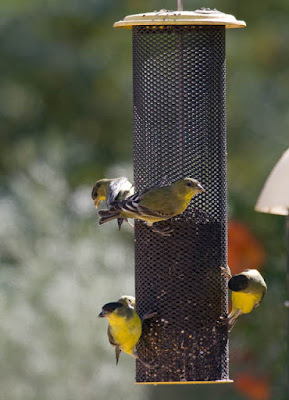
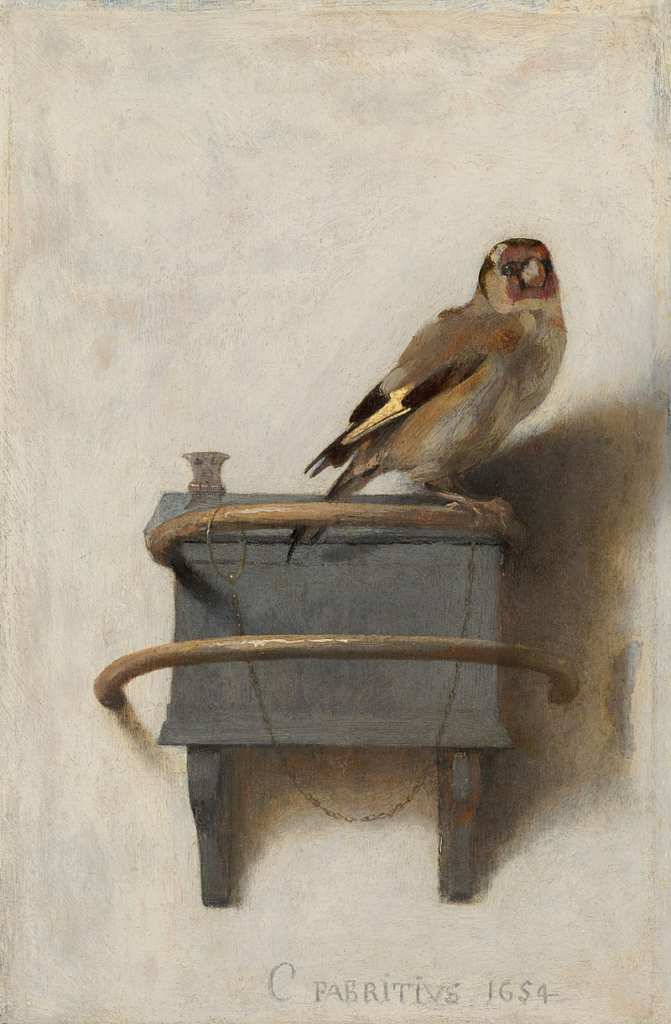
Leave a Reply